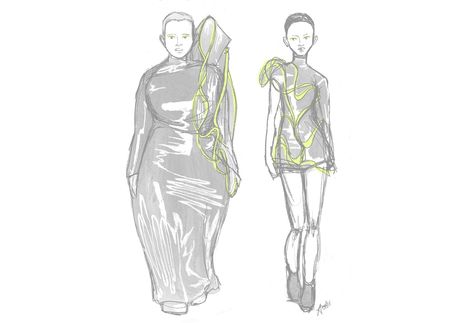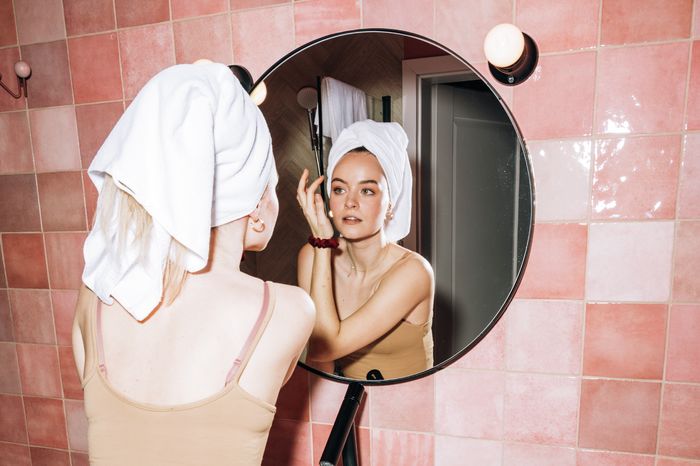The female body as battlefield
As beauty standards get more extreme than ever, how do we fight back?

Content warning: this article mentions eating disorders
Living as a woman in a patriarchal society is not just a state of being, but a political statement. Wars are waged over our bodies every day in every realm of existence, and once we have been vested of said autonomy, fashion trends are deployed to live and die on the battlefield that is the female body. As the high-risk Brazilian Butt Lift surgery rises in popularity amongst women, with a mortality rate of one in 3,000 patients, a body that the vast majority of women would not be able to achieve without undergoing a potentially life-threatening surgery appears to have become the new norm.
While surgery-enhanced hourglass bodies pervade the mainstream, the high fashion world exists at the other end of the extreme with long, lithe bodies. Bella Hadid, one of the world’s most beloved high fashion models, poses for Balenciaga’s Fall 22 Campaign.
“Pushing for inclusivity on the runway will not put an end to the battle being waged over our bodies”
Her ribcage is prominent in the image and her arms are long and wiry. The delicacy of her frame is contrasted by the heavy leather trousers and matching thick belt. She is posing in a way so as to emphasise her bony frame, which was likely a creative decision made by someone behind the camera rather than Hadid herself. The intention of this is to glamourise the ‘starved’ look. This image, representative of the commonplace glorification of the ‘skin and bones’ look in high fashion, is a declaration: namely, that beauty is found in one’s proximity to death.
Given that the average UK woman wears a size 16, the high fashion world – which classes anything above a size 10 as ‘plus-size’ – proves itself unattainable and unrelatable for the vast majority of women. Pushing for inclusivity on the runway will not put an end to the battle being waged over our bodies. These plus-size models are squeezed into unappealing garments akin to bin bags while their skinnier counterparts get more visually appealing outfits that show skin and allow for both sexiness and style. Both bodies are implicitly laden with value judgements. The battle continues.
“Our bodies do not need to be beautiful”
High fashion and fast fashion alike rely on unattainability to maintain the exclusivity factor. One extreme encourages women to risk death on an operation table for the sake of having a larger bum. The other extreme encourages women to treat extreme skinniness as a desirable fashion trend rather than a symptom of a potentially deadly eating disorder. These trends are manufactured almost as if to further promote our own self-destruction. This is not a coincidence. Fashion is just one of the many fronts on which the war against women’s bodies is waged, and we incorrectly believe that letting one side win will allow the war to end. The war will not end. It will continue inside of our heads every moment of every day we live. Calorie-counting on one hand, surgery revisions on the other. Light-headedness. Constant, never-ending insecurity. Distraction. Weakness. This is no way to live.
So, you might ask, how do we win a seemingly unwinnable war that seeks to turn women’s bodies into billboards of ever-changing trends? There isn’t any one answer, but it all begins with performing the most radical act any woman can take in a patriarchal society that is hellbent on convincing us that we must pay the price of conventional beauty to exist: loving yourself. Your body does not exist for the purpose of being looked at. The idea of every body needing to be ‘beautiful’ comes with the implication that women are not allowed to exist in society if they are not deemed ‘beautiful’, and it is upon this idea that the war is waged. The patriarchal construction of beauty is framed upon our bodies, and we respond by declaring all bodies to be ‘beautiful’. We believe that this strips patriarchy of its power to name beauty, but instead, we have ourselves internalised the same value system as the patriarchy: bodies must be beautiful. And once we do this, we have already lost.
It is vital that we let go of this idea and accept a simple truth: our bodies do not need to be beautiful. Our bodies do not need to be warzones. They are simply vessels through which we are able to experience the world. Each mark, blemish and wrinkle representative not of a loss or gain of beauty, but experience. The experience of having lived. To live out one’s carnal experiences with liberty and impunity is to defy the war being waged upon us. Today, we suffer. But tomorrow, we will emerge victorious.
 News / Cambridge students set up encampment calling for Israel divestment6 May 2024
News / Cambridge students set up encampment calling for Israel divestment6 May 2024 News / Cambridge postgrad re-elected as City councillor4 May 2024
News / Cambridge postgrad re-elected as City councillor4 May 2024 News / Proposed changes to Cambridge exam resits remain stricter than most7 May 2024
News / Proposed changes to Cambridge exam resits remain stricter than most7 May 2024 News / Some supervisors’ effective pay rate £3 below living wage, new report finds5 May 2024
News / Some supervisors’ effective pay rate £3 below living wage, new report finds5 May 2024 Fashion / Class and closeted identities: how do fits fit into our cultures?6 May 2024
Fashion / Class and closeted identities: how do fits fit into our cultures?6 May 2024






